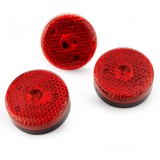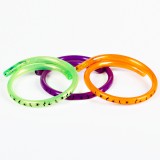 Parents can be excited over the upcoming Halloween season as much as the kids. After all, you have the friends and family get together, the spirit of the season in the air and a good excuse to dress up and party! And there is where the problem lies. Sometimes, excitement overrides caution. This is particularly true when it comes to choosing Halloween costumes for our children. The truth is: the cutest outfit may not be the safest costume for our kid. So here are some quick essential tips on how to make kids safe during this time.
Parents can be excited over the upcoming Halloween season as much as the kids. After all, you have the friends and family get together, the spirit of the season in the air and a good excuse to dress up and party! And there is where the problem lies. Sometimes, excitement overrides caution. This is particularly true when it comes to choosing Halloween costumes for our children. The truth is: the cutest outfit may not be the safest costume for our kid. So here are some quick essential tips on how to make kids safe during this time.
1. Keep flames away, or any flammable substance for that matter. Candles are especially hazardous and really quite unnecessary. There are battery powered electric candles your children can use, but try to limit these to older kids who can handle the additional weight. Glow sticks contain dibutyl phthalate which can be toxic when swallowed and these can accidentally break too. As a rule, try to keep costume props to a minimum. After all, kids are already expected to carry trick-or-treat-bags and candy, so props may only prove to be hindrances after a few minutes. It is also important to make sure also that your kids’ costumes are flame retardant.
 2. Night time visibility. Try to have your child avoid wearing dark clothing as part of their costume when they go out trick or treating on Halloween night. Of course, many Halloween characters such as grim reapers, vampires, werewolves, witches, and other dark ghoulish monsters wear these type of clothing. One solution to this problem is have your child wear portable safety lights while they go out. Halloween stores have standard red safety lights (pictured above) or you can buy bright multicolor light up necklaces (pictured right) that will appeal more to the kids.
2. Night time visibility. Try to have your child avoid wearing dark clothing as part of their costume when they go out trick or treating on Halloween night. Of course, many Halloween characters such as grim reapers, vampires, werewolves, witches, and other dark ghoulish monsters wear these type of clothing. One solution to this problem is have your child wear portable safety lights while they go out. Halloween stores have standard red safety lights (pictured above) or you can buy bright multicolor light up necklaces (pictured right) that will appeal more to the kids.
3. Mask vs. face paint. Your kid’s mask may look cool. But having your little one wear it out on the street with a full costume on, a trick-or-treat-bag on one hand, with other kids bumping into him or her cannot really be considered safe. If mask is part of the ensemble, make sure that you limit it to a face mask, and cut open the eye and nose areas more. A full head mask is dangerous because the visibility is limited, and your child may not be able to breathe or hear normally.
Choosing face paint for your child is a bit better since your kid is not hindered visually. However, it is important to make sure that the face paint you are using is FDA-approved, non-toxic, skin safe and washable. Better yet, why not choose a costume that allows your child to show his or her face?
4. Check, re-check and go over your kid’s costume for any sharp corner, any abrasive area (particularly around the neck,) or extra pieces of fabric that may hinder regular movements. Try to schedule a fitting before Halloween and let your kid walk around the house a bit. Here you can see if the hem is too long, if the sleeves are bothersome, or if the child feels uncomfortable under the weight of the fabric or other props. Make adjustments as you see fit.
Keeping your kids happy and healthy should be your primary concern during Halloween. Assuredly enough, it only takes a few preparation and forethought to make this happen.